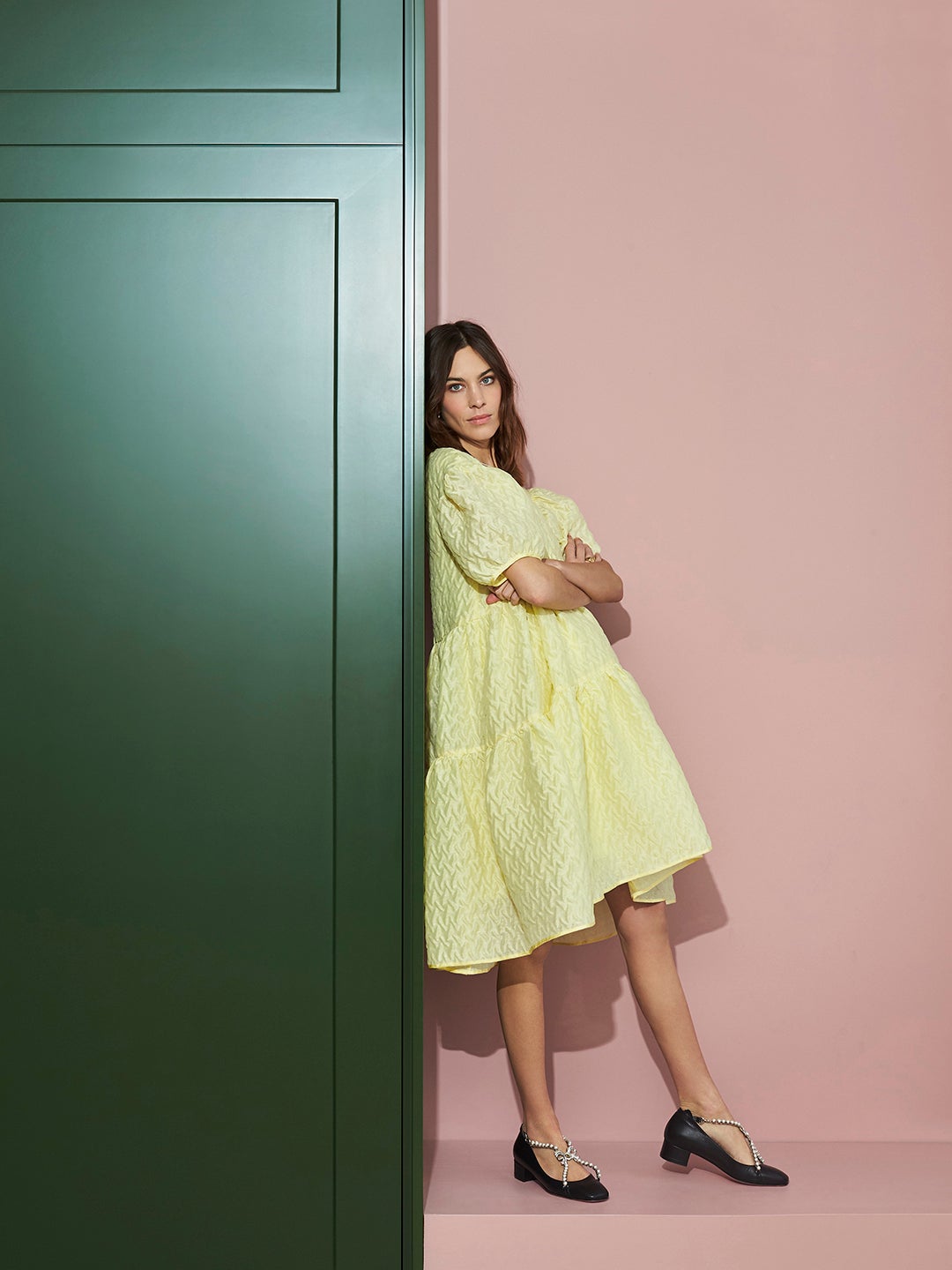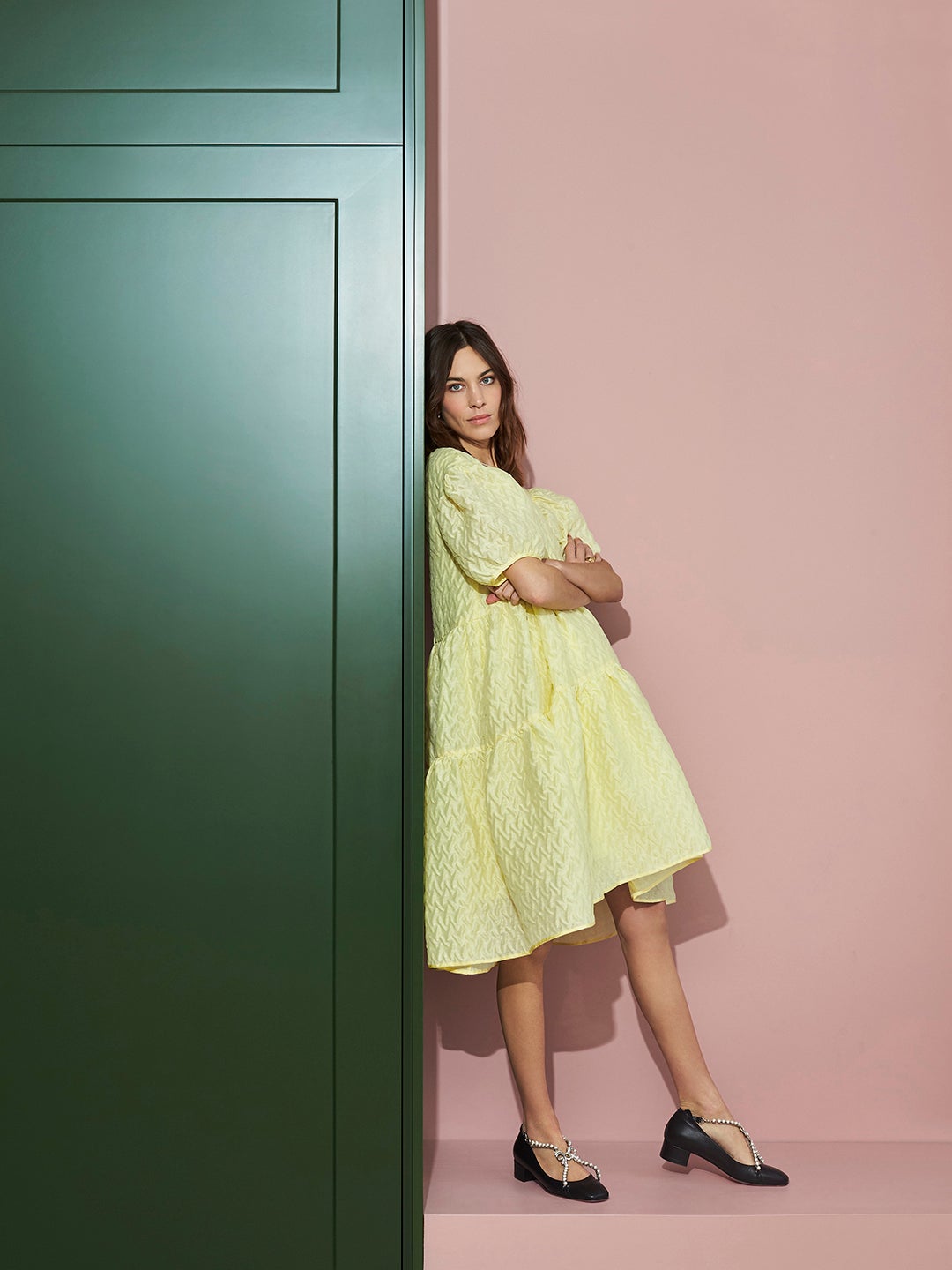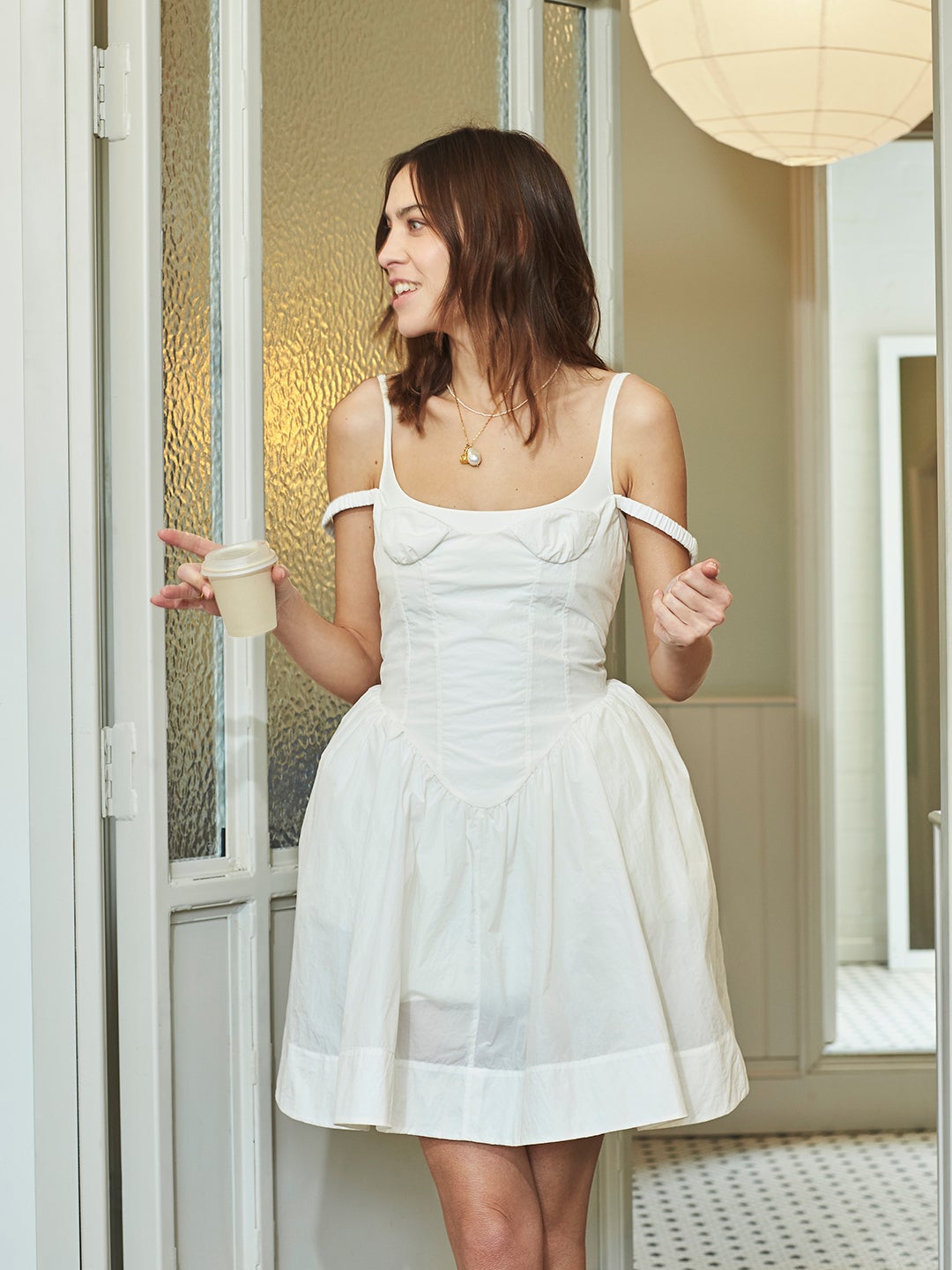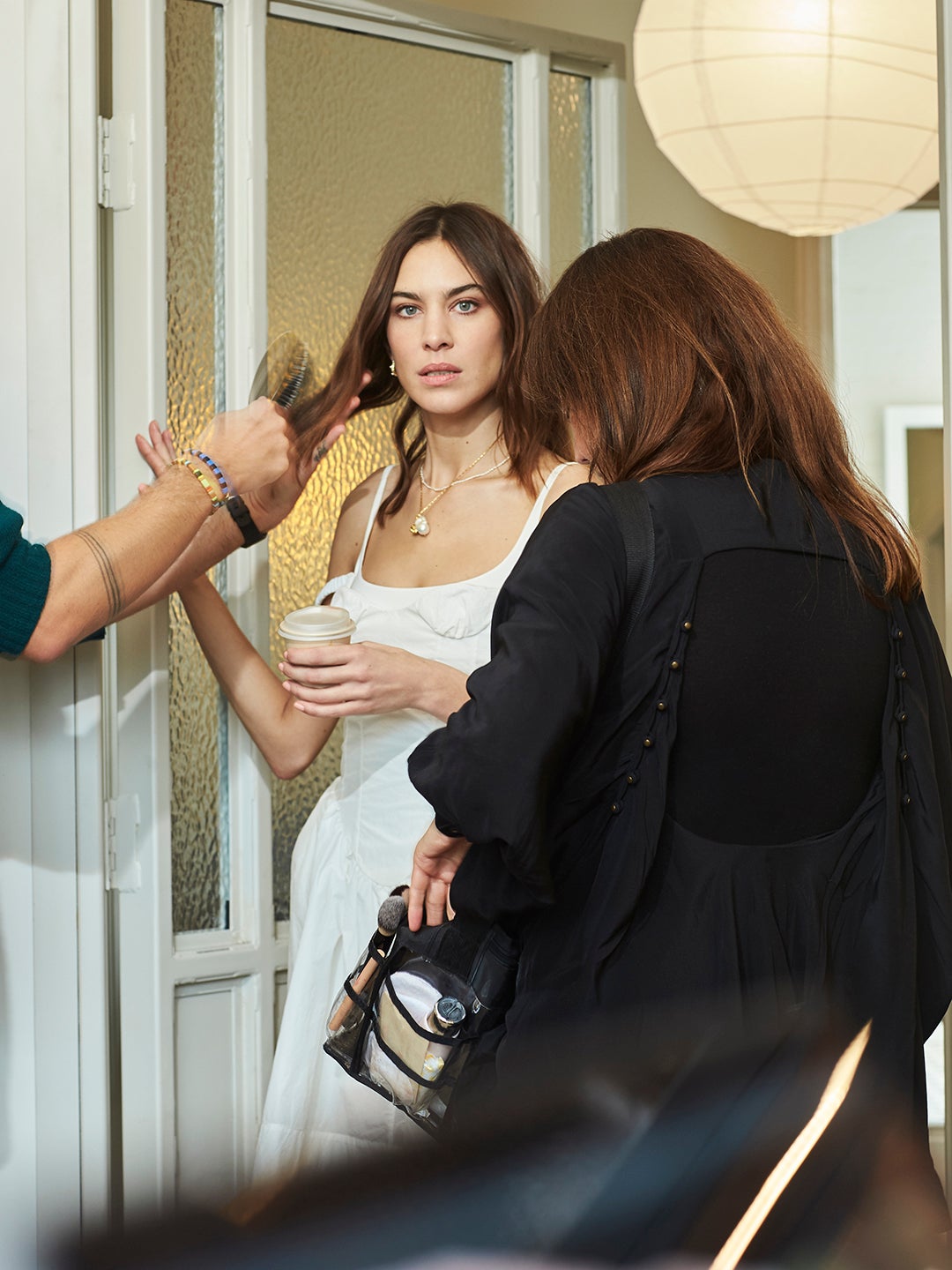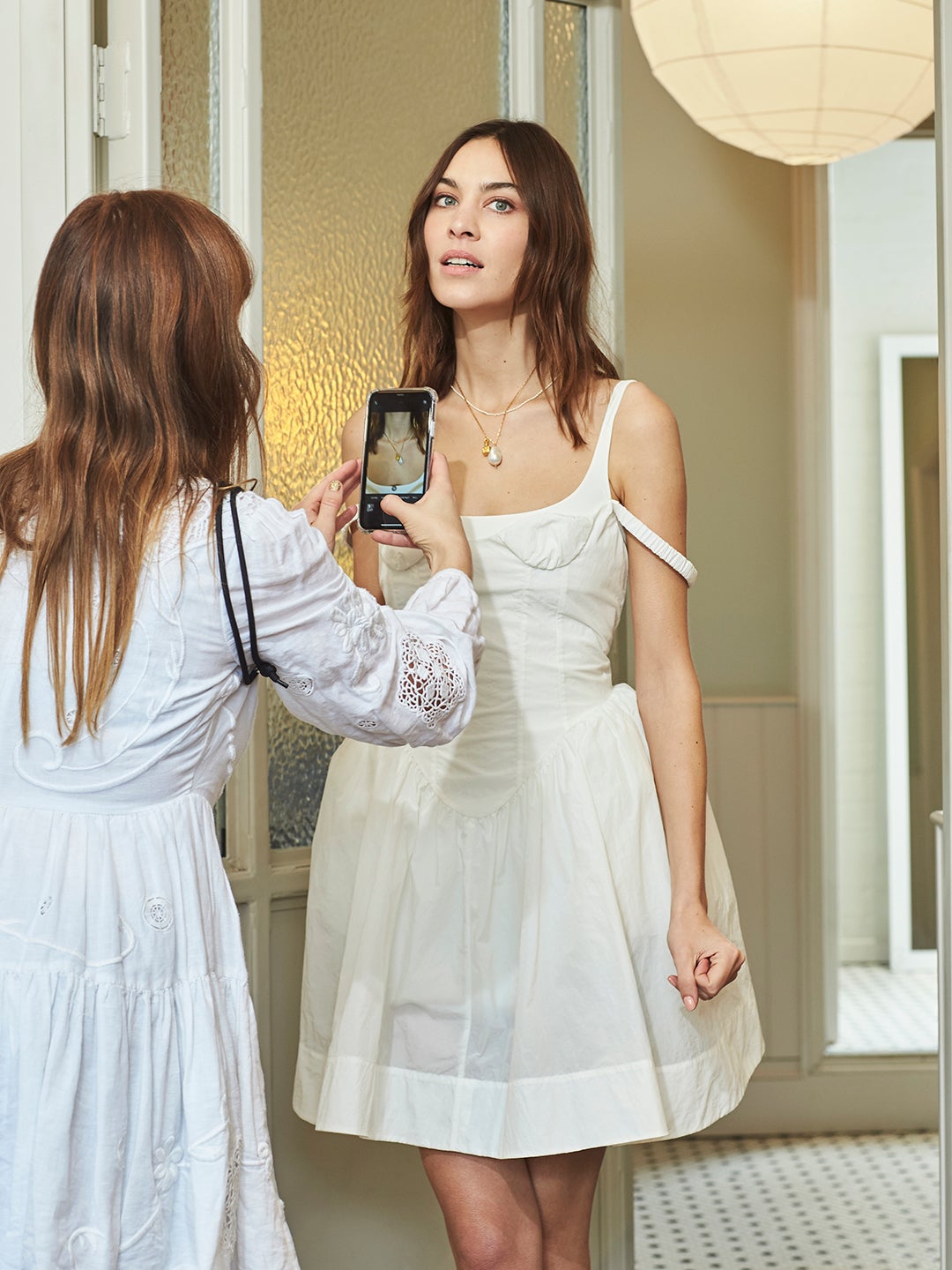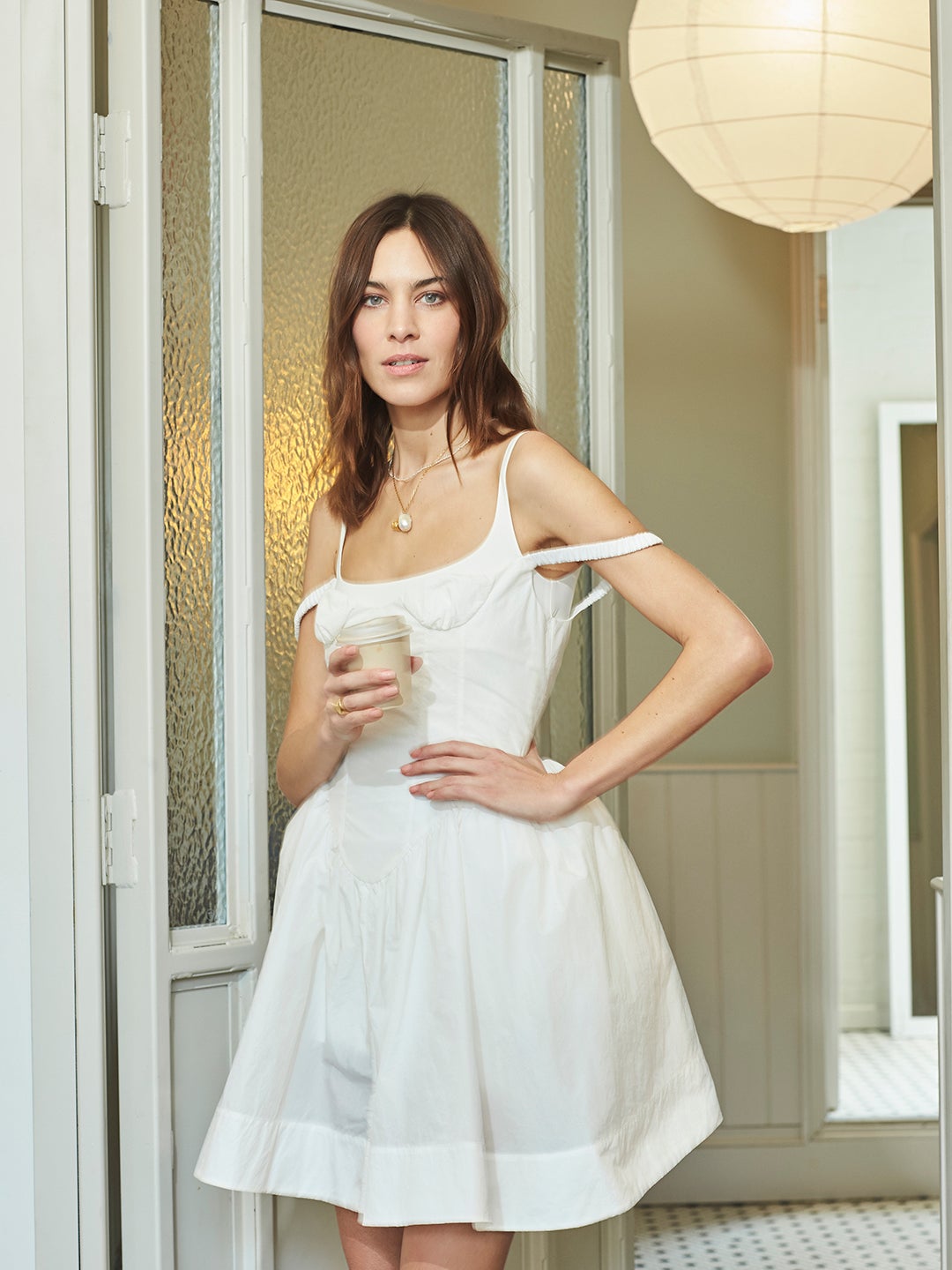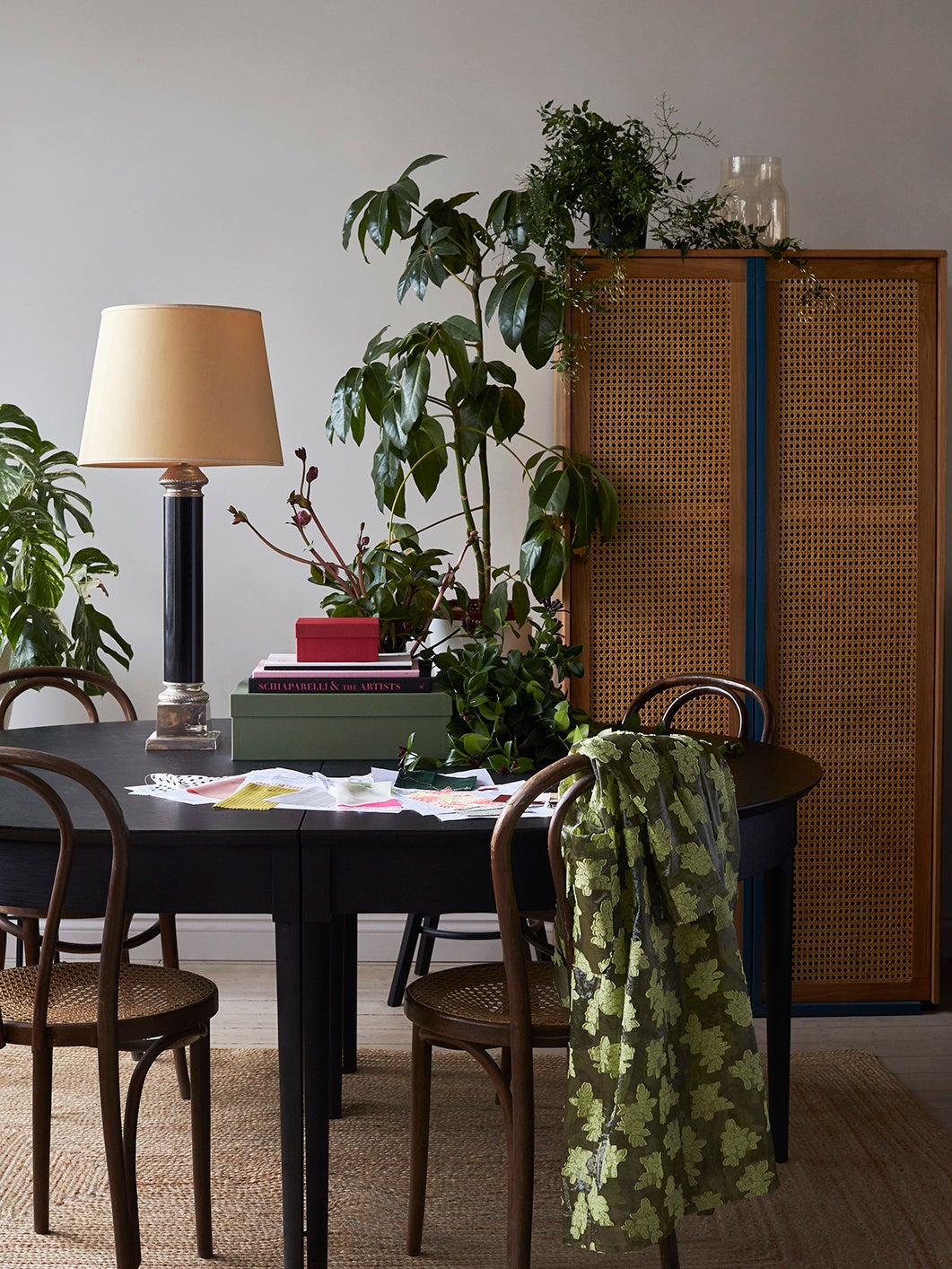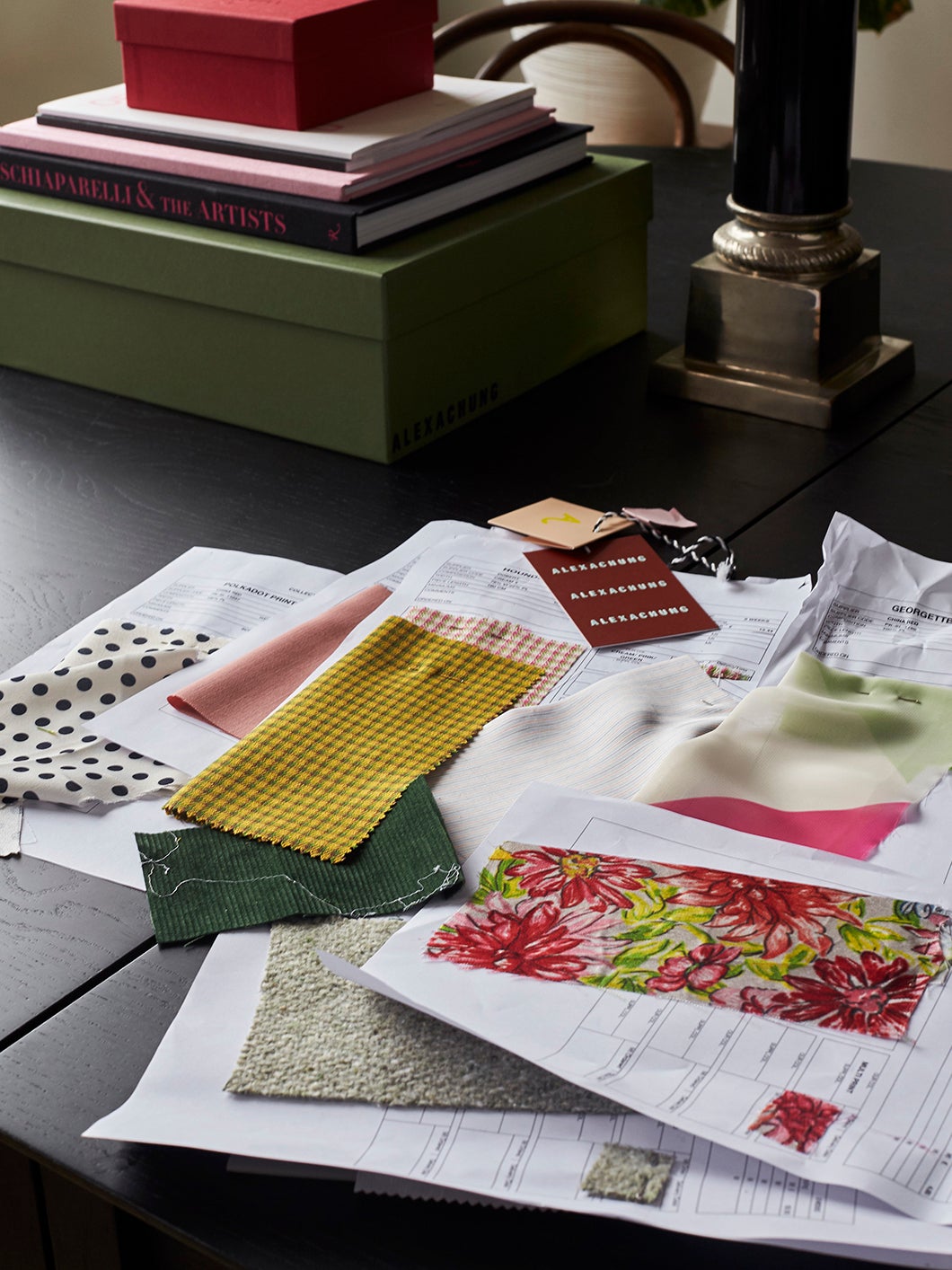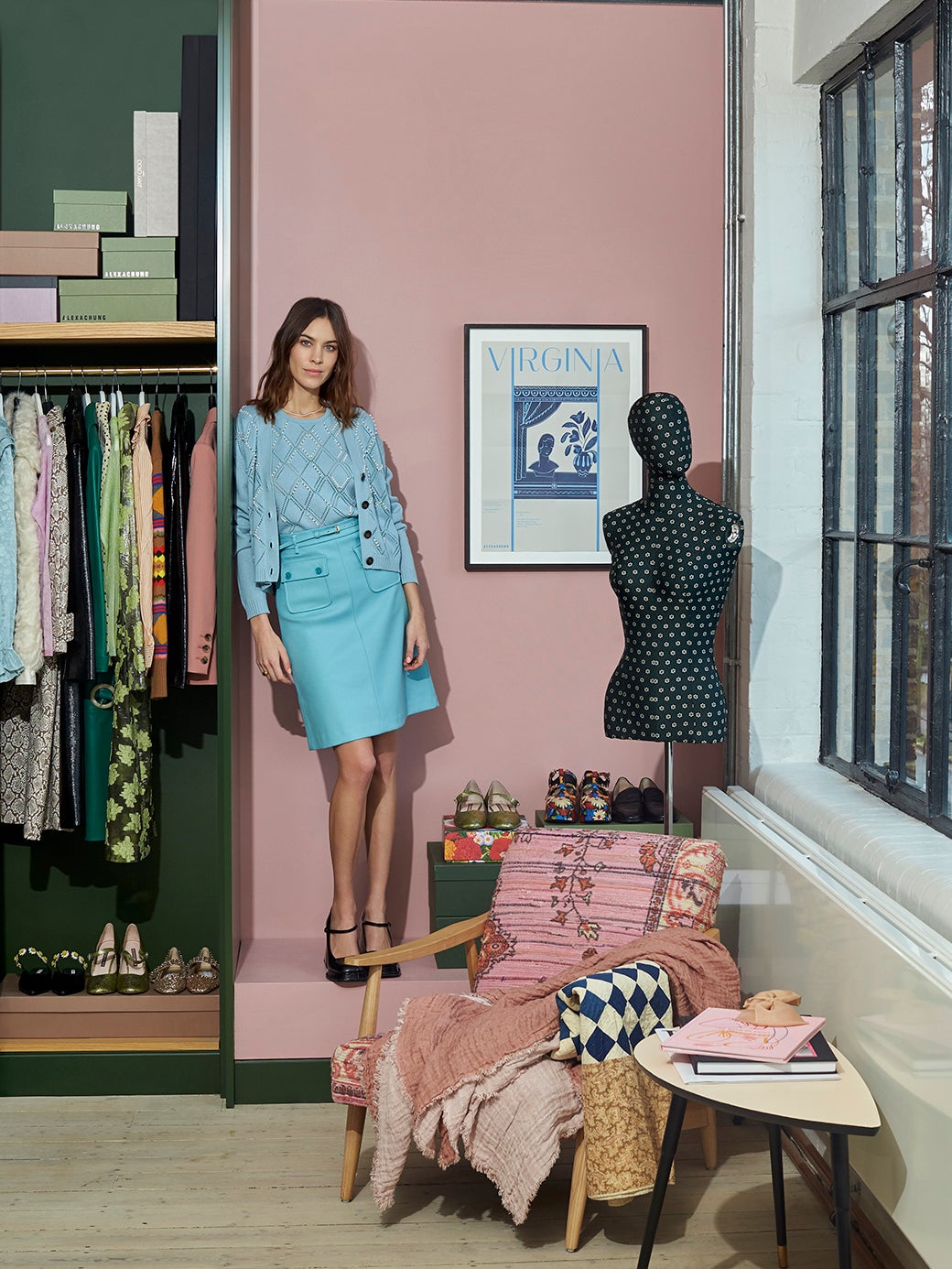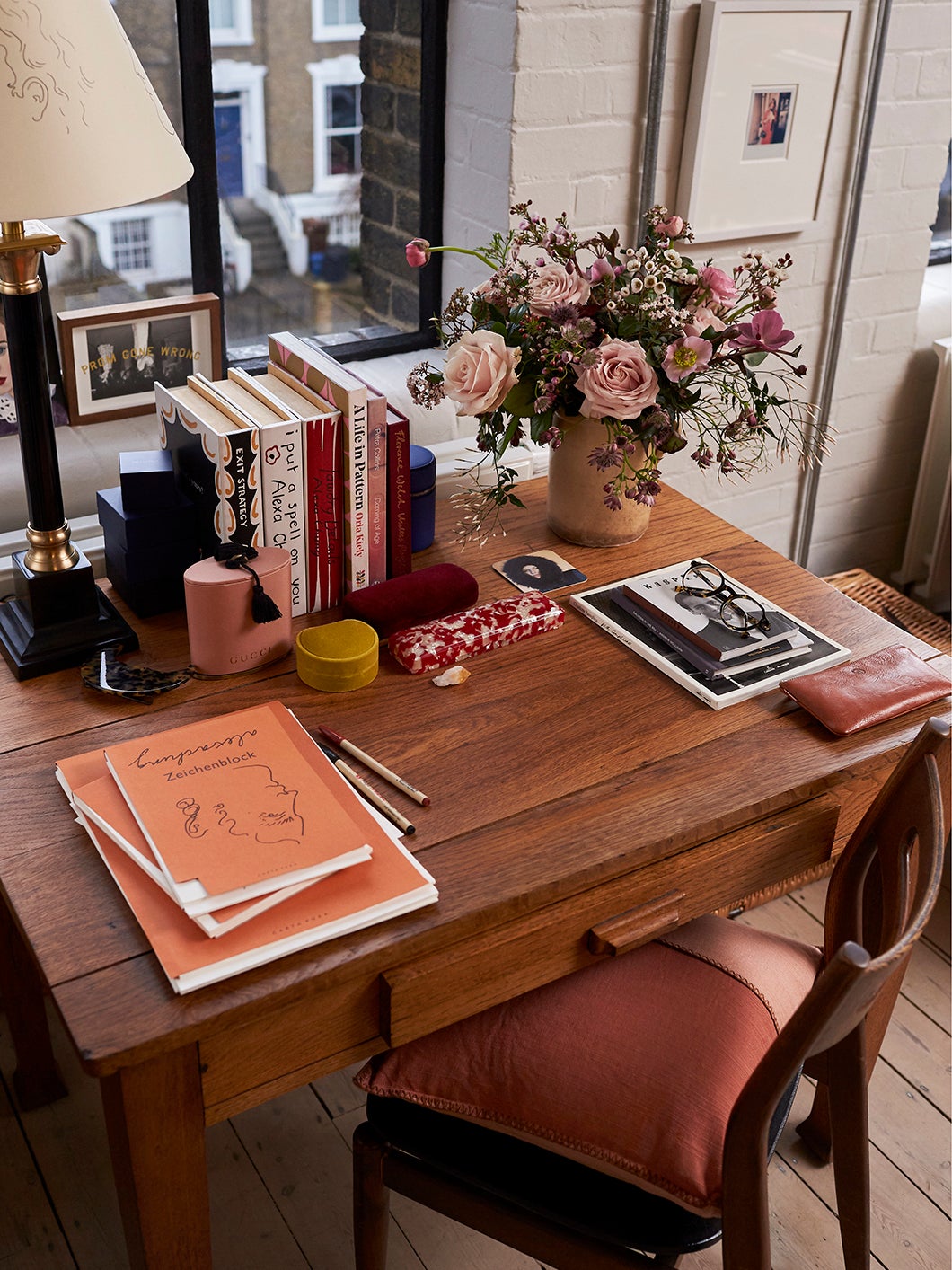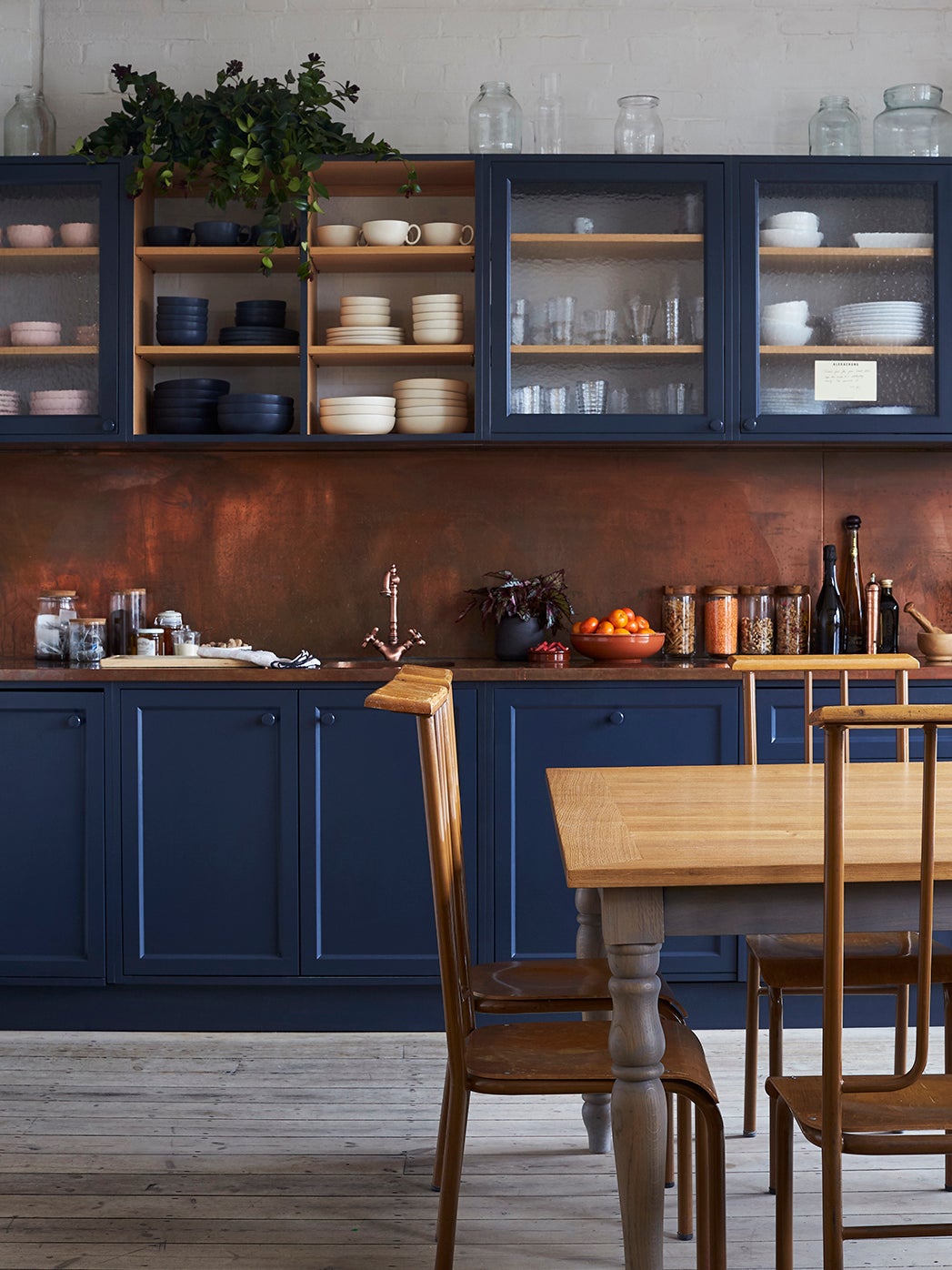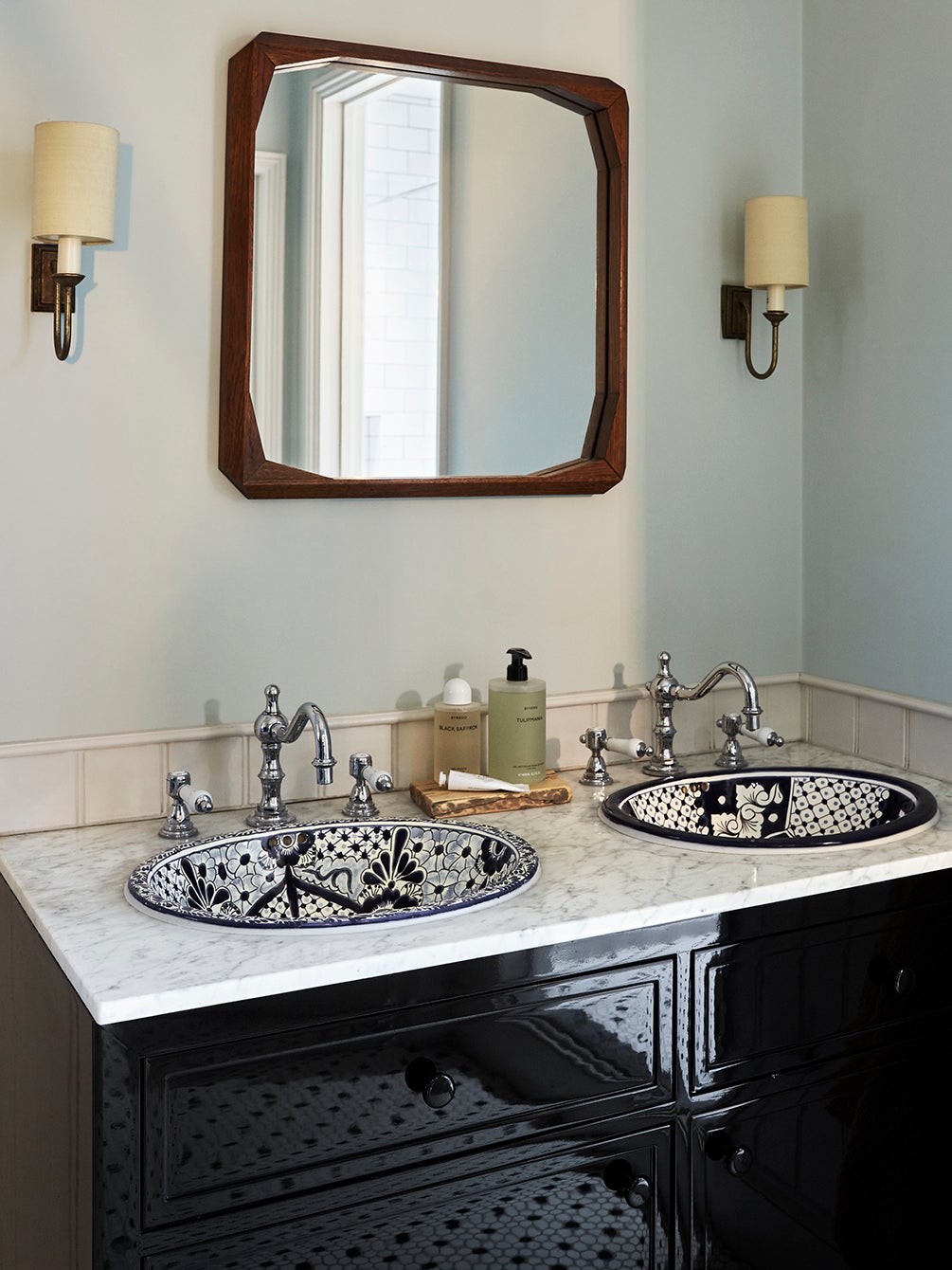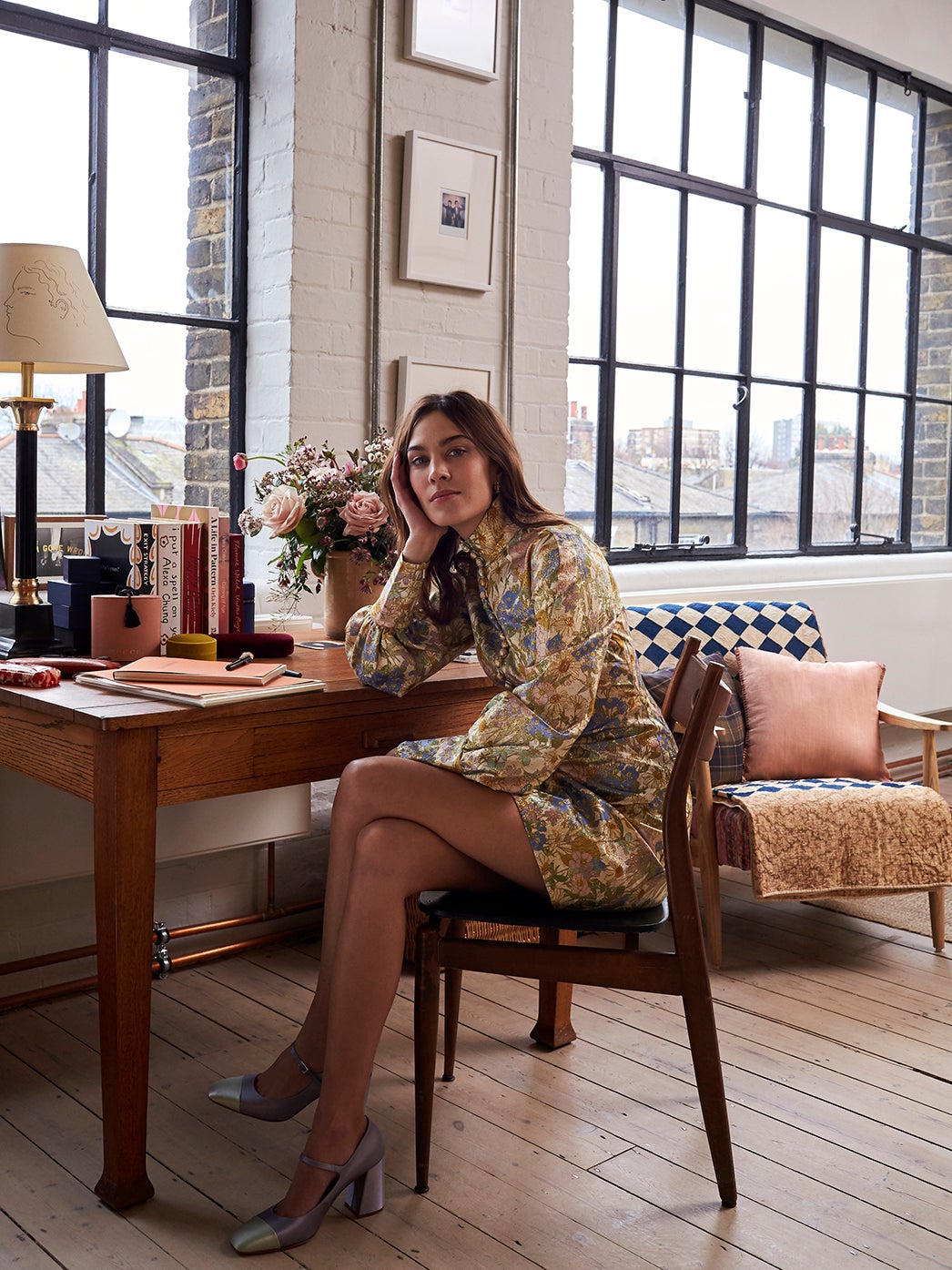We may earn revenue from the products available on this page and participate in affiliate programs.
In the more than 20 years since Alexa Chung—England’s cleverest trendsetter and best-dressed-list fixture—was discovered, she has spun a successful modeling career into being a sought-after presenter for radio and television programs on fashion and music; penned the book It; and continues to inspire designers worldwide with her uniquely British wit and style—a combination of crisp tailoring and rock-and-roll swagger, with a ruffle or kitten heel thrown in for good measure. In 2017, Chung launched her own label, Alexa Chung, a tightly edited line that drew on her eclectic influences—from David Bowie to Victorian wallpapers to 1960s housewives—which she deftly distilled down to singular looks everyone wants to be wearing. Then in spring 2020, Chung returned to TV to cohost the first season of the Netflix series Next in Fashion, alongside Queer Eye’s Tan France, a design competition that names one major fashion talent among a group of promising international candidates.
We visited her office in East London and chatted about the unexpected inspirations that make her outfits (and spaces) so layered and cool, the importance of staying true to your style, and her lifelong search for that perfect shade of green.
How did you go about translating your style into your line?
It’s become much closer to my own style as we go along. When I first started, I thought I was just lucky to have a seat at the table. I would listen to all the critics, and I got in my head too much. Once I turned the volume down on that, I let myself take more risks—even if it meant making a weird dress I imagined from a Kubrick film. And I think that’s when my collection got really good. I realized I just had to make pieces that I loved and wanted to wear. Imposter syndrome and that noise in our heads hold us back. It dampens creativity. That’s true in any job you do.
Music and writing are also a big part of your life. Do those things show up in your work?
I start every collection with a mood board, which will always contain images of art and musicians from different eras, and I find the common thread through it all. I’m obsessed with that synchronicity—the synergy between a picture of Ziggy Stardust and Barbarella and the exact shade of silver on the rocket that was launched at the same time the movie was out. I’m like a toddler pointing to those things, saying, “Look! Do you see it?” In general, I love to observe how our culture reverberates, connecting things from the past and the present. Our spring collection became about Betty Draper through a psychedelic lens after I rewatched Mad Men and remembered how iconic she is—those repressed women with aspirations and brains in the ’60s. It’s a slow-motion children’s Easter party in a Valium haze. There are some intense floral motifs, kandy-colored with a k.
Would you say that mashup of influences goes back to your childhood?
Yes. I grew up in quite a liberal, arty household in a stuffy village in the middle of the countryside. I’m part Chinese, so a little unusual for that part of the world. I was obsessed with pop culture and loved rock and roll, but I was also in this very sedate, calm, reliable place.
Is that reflected in your spaces, too?
I’m comforted by traditional Britishness. My soul is that of an old-timey woman; I like Victorian things. But then I’ll have a swatch of vintage wallpaper next to a photo of Jodie Foster on a skateboard in Freaky Friday, or a mid-century lamp on a very old chest of drawers. That’s just how my brain works. They’re all of interest to me. It’s like we’re all existing at the same time. We’re all at one big party. I bring those different elements together in my home and my workspace.
Where does color come in with the layering and mixing and matching?
The pink walls in the office feel like a Georgian tavern. They’re a rude interruption next to those chic green cabinets, which were inspired by a pair of Celine pants. One thing I’ve learned since I started this business is how nuanced color is. We can lab-dip a T-shirt 15 times trying to get the perfect shade of pink. It can be the most maddening thing. We were in search of the perfect green for our packaging and shopping bags, and we couldn’t get it right. Then I saw a girl on the street wearing these green pants. I asked her who made them, and of course got them for myself. So I brought the pants into the office and said, “This is the green.” I asked everyone, “What color is this?” It’s hard to describe. We took some of the threads apart and saw that there was yellow in there. So we matched the paint to the pants. I’m still searching for the ideal green and probably will be for the rest of my life.
Any advice for emerging designers and the Next in Fashion cast?
I wasn’t comfortable being in the judge role. That was a query I had before I accepted the job. The producers’ goal was to create a show that was uplifting and not an old-fashioned trope about fashion being bitchy. We’ve got this perception that the industry is ruled with an iron fist. Tan and I have both been in that situation, so we were very sympathetic and wanted to focus on the positive relationships between the designers—they’re a diverse, international group of amazing talent. Because it’s hard to run a business in the fashion space. I’ve been touched by how generous and helpful everyone has been to me, sharing sources and information and being so supportive.
What’s next for you?
We’re working on a collection called Suburban Punk. Having lived in America and moving back here, I still find it fascinating that Brits cling to these weird social cues that are invisible to other countries but really matter to us. So I liked the idea of someone living in the countryside here and only having access to their mother’s wardrobe, working with that limitation but trying to be really rebellious. For me, clothes are a way to telegram your personality.
Wardrobe Styling by Rachel Bakewell; Hair by George Northwood; Makeup by Florrie White; Manicure by Michelle Class. Office Design by Kinnersley Kent Design.
The Goods
Top of Mind With Alexa Chung
Last thing pinned on your mood board: A picture of Charlotte Rampling in an airport in the ’70s (that’s all I ever want to look like) and a photo of a Pre-Raphaelite painting as we start on a Met Gala outfit.
Artwork that recently moved you: The Dior collaboration with Judy Chicago was incredible. She commissioned these beautiful tapestries embroidered with questions, including: What if women ruled the world?
Color-combo crush: Pink and red. I’m also constantly wearing camel and cream.
Pattern of the moment: Today it’s the Madame de Montreuil floral print by Les Indiennes.
Dream person to dress: Kate Moss, Chloë Sevigny, Lauren Hutton—women who look like they don’t work with a stylist.
Telltale sign a room is yours: I’m not messy per se, but there’s always a Russian doll version of bags around. Right now it’s a Susan Alexandra beaded rainbow bag inside a Gucci satchel inside a vintage Japanese tote.
East London highlight: You can step out and see dozens of amazing outfits on the street—people who don’t care about fashion, like old men who happen to have great style.
This story was originally published in our Summer 2020 issue with the headline “She’s Got the Look.”
The post The Green Closets in Alexa Chung’s London Office Were Inspired by a Pair of Pants appeared first on domino.
